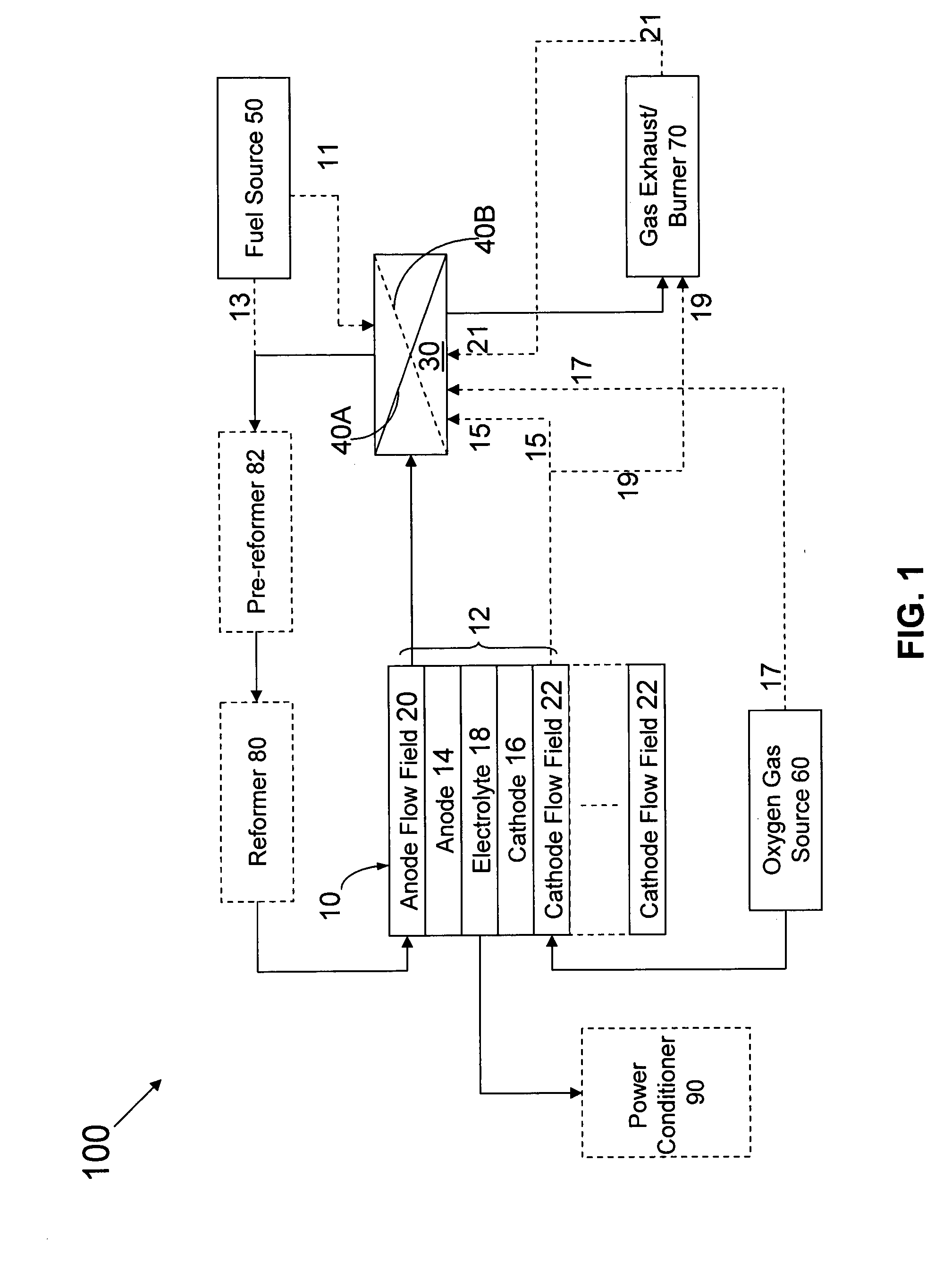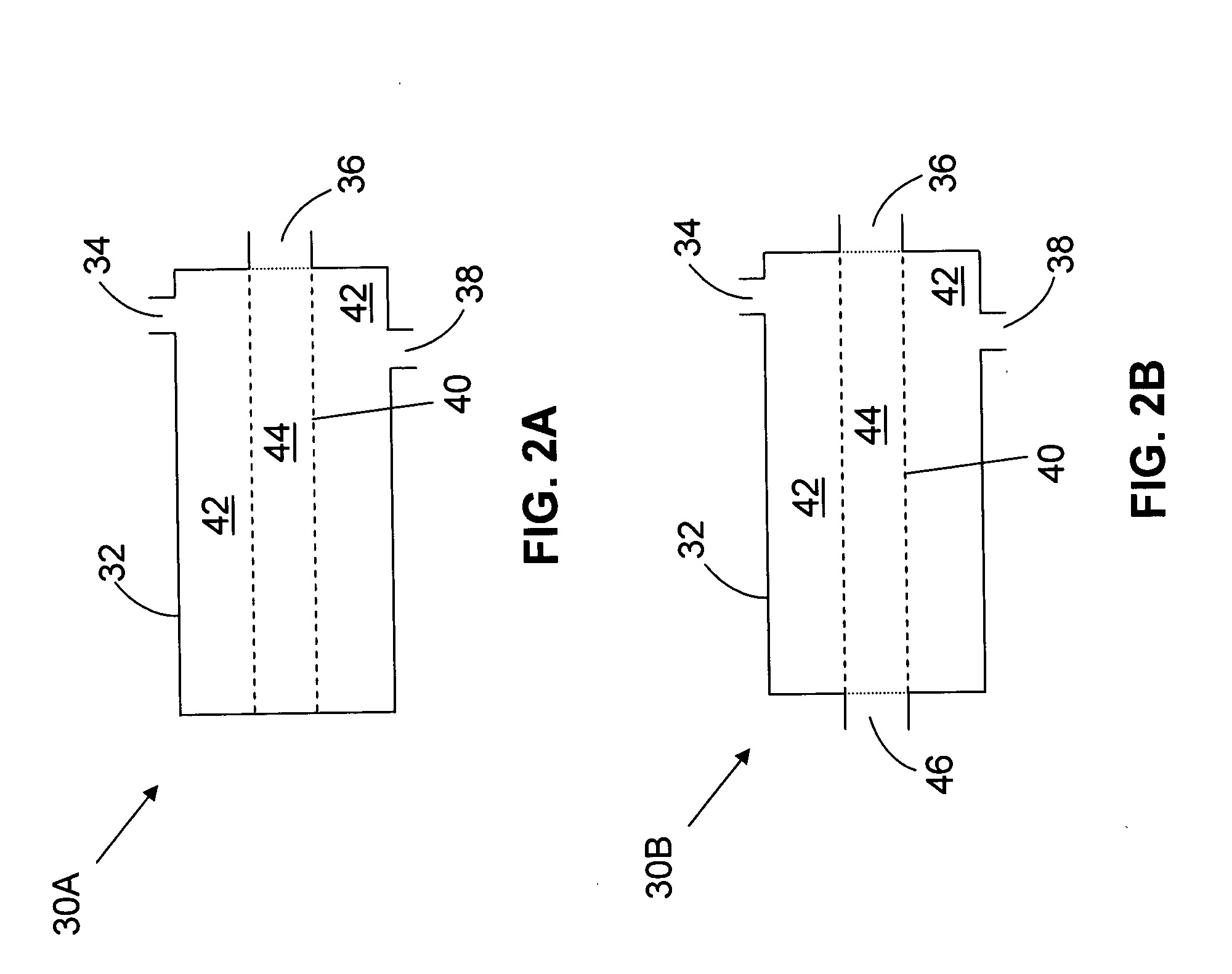Anode exhaust recycle system
a technology of anode exhaust and recycle system, which is applied in the direction of fuel cell systems, cell components, electrical devices, etc., can solve the problems of increasing the size of the fuel stack, the formidable entry etc., and achieves the effect of increasing the efficiency of the fuel cell system of the invention, increasing the utilization rate of total fuel, and high efficiency of the fuel cell system
- Summary
- Abstract
- Description
- Claims
- Application Information
AI Technical Summary
Benefits of technology
Problems solved by technology
Method used
Image
Examples
Embodiment Construction
[0017]The foregoing will be apparent from the following more particular description of example embodiments of the invention, as illustrated in the accompanying drawings in which like reference characters refer to the same parts throughout the different views. The drawings are not necessarily to scale, emphasis instead being placed upon illustrating embodiments of the present invention.
[0018]FIG. 1 shows one embodiment of the fuel cell systems of the invention, fuel cell system 100. Fuel cell system 100 includes fuel cell stack 10, separator 30, fuel source 50, oxygen gas source 60 and gas exhaust 70. Fuel cell stack 10 includes at least one fuel cell 12. Fuel cell 12 includes anode 14, cathode 16 and electrolyte 18. Anode 14 is in fluid communication with fuel source 50, such as H2 gas or a natural gas which can be converted into H2, optionally via anode flow field 20. Cathode 16 is in fluid communication with oxygen gas source 60, such as air, optionally via cathode flow field 22. ...
PUM
| Property | Measurement | Unit |
|---|---|---|
| permeable | aaaaa | aaaaa |
| selectively permeable | aaaaa | aaaaa |
| chemical energy | aaaaa | aaaaa |
Abstract
Description
Claims
Application Information
 Login to View More
Login to View More - R&D
- Intellectual Property
- Life Sciences
- Materials
- Tech Scout
- Unparalleled Data Quality
- Higher Quality Content
- 60% Fewer Hallucinations
Browse by: Latest US Patents, China's latest patents, Technical Efficacy Thesaurus, Application Domain, Technology Topic, Popular Technical Reports.
© 2025 PatSnap. All rights reserved.Legal|Privacy policy|Modern Slavery Act Transparency Statement|Sitemap|About US| Contact US: help@patsnap.com



